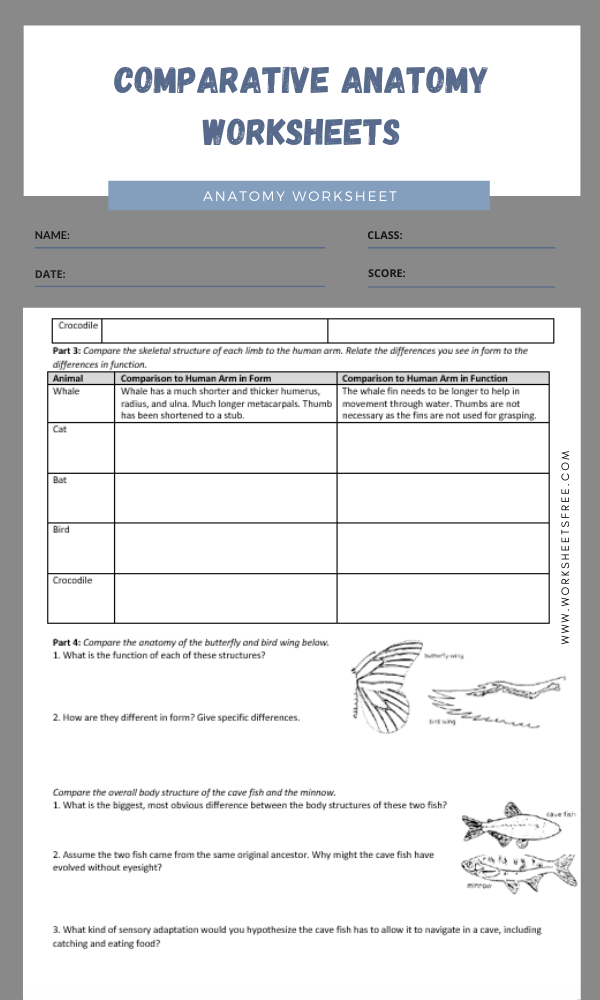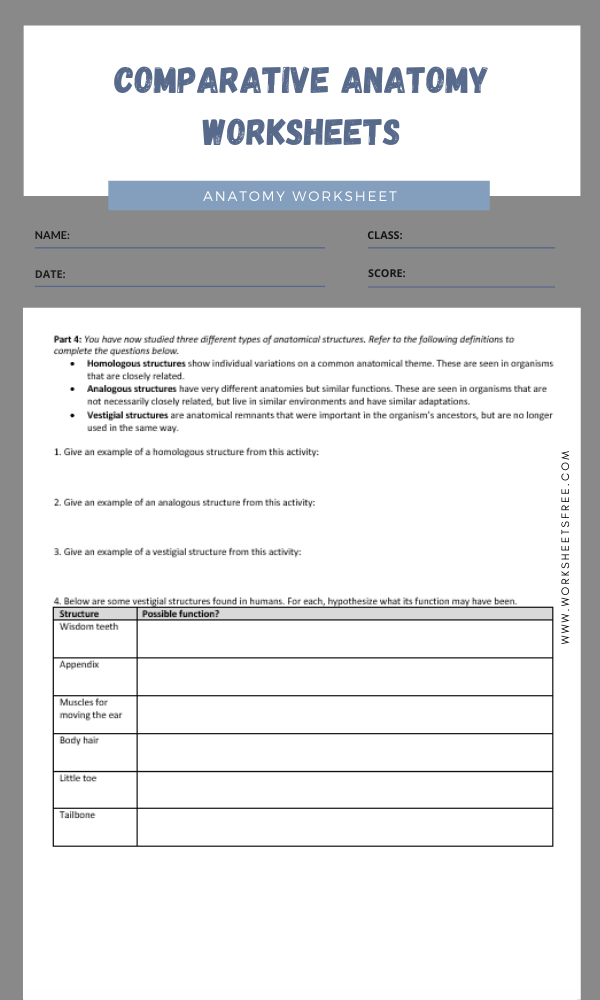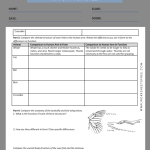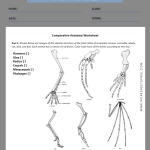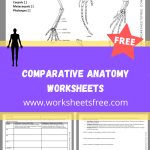Comparative anatomy worksheets are an essential part of any biology course. It allows students to understand anatomy in different ways, making the concepts more easily understood. In addition, it can help students to gain more in-depth understanding about their topic by understanding it in different ways.
The human body is made up of four main organs. These include the eyes, ears, nose, and mouth. Students will need to understand all these organs and their functions in order to understand anatomy. This will enable them to make more informed decisions about what to do when faced with some kind of health problem.
Anatomy Worksheets
Another good thing about comparative anatomy worksheets is that they give a more thorough explanation of each organ and function of a certain organ. This makes learning anatomy easier and more comprehensible to students. They will be able to understand and apply the concepts to the situations that they find themselves in.

comparative anatomy worksheets 1
A worksheet may contain information about a certain part of the body. This includes information such as information on the name of the organ or tissue that it represents. It may also contain information such as its general shape and size, its location, and its function. Other information included in the worksheet is the scientific name of the organ.
Different parts of the body may have many variations in their shapes and functions. Some parts of the body are considered to be larger than others. This is why the comparative anatomy worksheets are very helpful for students to gain an overview of all the different variations of their anatomy. There is no need to worry about how to handle various tissues in one part of the body if it is not represented. In fact, students will be able to understand the entire structure of a certain part just by looking at the worksheet.
An important, yet not always used, but useful part of the worksheets is the definition of words used in anatomy and physiology courses. It is important for students to know the exact meaning of certain words before they use it in their studies. Some examples of such words are: aortic arch, pericardial lymph, endocardium, the heart valves, heart muscle, ventricular myocardial circulation, and lumen. {of ventricular myocardial circulation. A list of other important words that students should familiarize themselves with is: diaphragm, arterioles, myocardial walls, renal tubular lumen, perirenalveolar walls, arteriovenous sinus, peritoneum, hepatic wall, aortic valve, spleen, kidney, epididiotens, laryngea, cilia, heart valves, myocardium, renal pelvisolevrum, and trachea.


